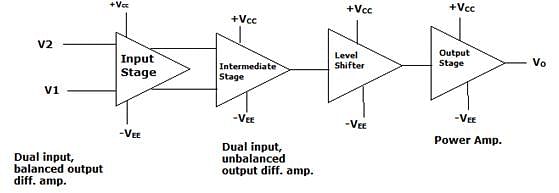Test: Operations Amplifier - Electronics and Communication Engineering (ECE) MCQ
10 Questions MCQ Test GATE ECE (Electronics) Mock Test Series 2025 - Test: Operations Amplifier
What is the use of the compensation capacitor in op-amp?
Which of the following option is correct according to the below statements?
A: Voltage gain of op-amp decreases at high frequencies
B: Its internal structure uses a capacitor
A: Voltage gain of op-amp decreases at high frequencies
B: Its internal structure uses a capacitor
| 1 Crore+ students have signed up on EduRev. Have you? Download the App |
Given that CMRR is 100dB. Input common-mode voltage is 12 V. Differential voltage gain is 4000. Calculate output common-mode voltage.
A practical op-amp has a bandwidth of only 10 Hz. Gain is 106, and the required bandwidth is 100 kHz. How much feedback is required?
In the given block diagram of an op-amp. What are A, B, C and D?

Till what frequency do we get amplification from IC 741?
The unity gain bandwidth for an op-amp having open loop gain 2×106 is 10 Mhz. Calculate the AC gain of op-amp at an input of 2000 Hz.
Given that for an op-amp the gain is 103, the slew rate is 1.5V/μsec. Input is 5×10-3sinωt, calculate maximum frequency to prevent distortion.
Which of these is incorrect for an operational amplifier?
|
25 docs|263 tests
|
|
25 docs|263 tests
|



















